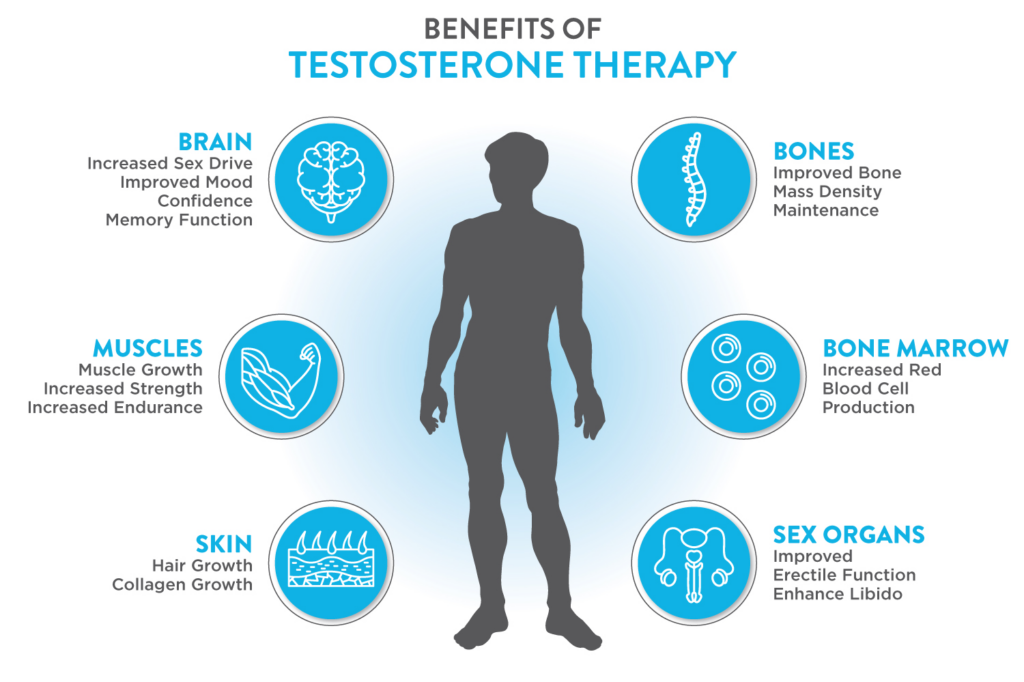Testosterone plays a crucial role in the overall health and well-being of individuals, especially men. It influences everything from muscle mass and bone density to mood and energy levels. As men age, their natural levels to decline, but in some cases, this drop can lead to significant health issues.
When this happens, medical professionals may recommend hormone therapy as a way to restore balance and alleviate symptoms. For those exploring treatment options, testosteronenow can offer insight into what to expect, how it works, and whether it’s the right solution for hormonal deficiencies.
As men reach their 30s and 40s, it’s not uncommon for trt production to decline gradually. While this is often a slow process, some individuals experience more rapid or severe drops that lead to a condition known as hypogonadism. This condition can cause symptoms such as fatigue, reduced libido, depression, irritability, and a decrease in muscle strength.
While lifestyle factors like diet, exercise, and sleep can influence hormone levels, they may not always be enough to counteract the effects of aging or underlying medical issues.
Hormone replacement, specifically testosterone supplementation, is designed to bring levels back within a normal range. When looking to increase t, it becomes evident that there are multiple ways to administer this type of treatment.
Options include injections, skin patches, gels, oral tablets, and even subcutaneous pellets. Each method has its pros and cons, and the choice often depends on individual preferences, medical history, and how well the body absorbs or responds to the treatment.
Injections are one of the most common forms of therapy. They are typically administered every one to two weeks and can deliver a consistent dosage of testosterone. However, some patients may experience fluctuating hormone levels between doses, which can lead to mood swings or varying energy levels.
Gels and patches offer a more stable daily release, but they can sometimes irritate the skin or transfer testosterone through contact with others. Oral options are less commonly prescribed due to potential liver complications, while implanted pellets offer a long-term solution by slowly releasing hormones over several months.
When examining this it is essential to consider both the potential benefits and risks. Many individuals report improved energy, enhanced mood, better sleep, increased libido, and greater muscle mass after beginning therapy.
These positive outcomes can significantly enhance quality of life, especially for those who have struggled with fatigue and low motivation due to hormonal imbalances.
However, hormone therapy is not without its drawbacks. It may lead to side effects such as acne, fluid retention, or an increase in red blood cell count. In some cases, it can cause sleep apnea or stimulate noncancerous growth of the prostate.
For this reason, ongoing medical supervision is critical. Blood tests are typically required before starting treatment and continue at regular intervals to monitor hormone levels, red blood cell counts, liver function, and other relevant health markers.
It is also important to note that supplementation can affect fertility. The body’s natural production occurs in the testes and is regulated by a delicate feedback system. When external testosterone is introduced, the body may reduce or stop its own production, potentially lowering sperm count. This is particularly important for younger men who still wish to have children, and alternative therapies may be suggested in these cases.
Beyond the medical aspects, this also involves understanding the lifestyle changes that often accompany treatment. Healthy habits such as consistent exercise, a balanced diet, adequate hydration, and quality sleep can enhance the benefits of hormone supplementation. These practices also reduce the risk of cardiovascular issues, which are sometimes a concern with long-term use of testosterone.
Not everyone with low levels is a candidate for replacement therapy. Some men may have temporary dips in hormone levels due to stress, illness, or medication.
In these cases, doctors may recommend waiting or addressing the underlying cause before turning to hormone intervention. A comprehensive evaluation is necessary to determine whether symptoms are truly related to testosterone deficiency or another health issue altogether.
For women, testosterone is present in much smaller amounts but still plays a role in overall health, especially in terms of sexual function and mood.
While less common, some women undergo hormone therapy to address specific issues such as decreased libido or menopause-related symptoms. As with male patients, medical consultation is necessary to weigh the benefits against potential risks.
Ultimately, this is not a one-size-fits-all solution. The decision to begin treatment should be based on a thorough diagnosis, including blood work and symptom analysis, in consultation with a qualified healthcare provider. The goal of therapy is not merely to increase hormone levels, but to restore balance and improve overall quality of life.

It’s important to approach hormone therapy with realistic expectations. While it can alleviate many symptoms associated with low testosterone, it’s not a cure-all. Some benefits may take time to manifest, and adjustments to dosage or method may be necessary along the way. Partnering with a knowledgeable medical provider ensures that treatment remains safe, effective, and personalized to each patient’s needs.
By taking the time to understand the full picture—patients can make informed decisions about their health. From choosing the right delivery method to recognizing potential risks and benefits, this knowledge empowers individuals to take control of their well-being and pursue a healthier, more energized life.